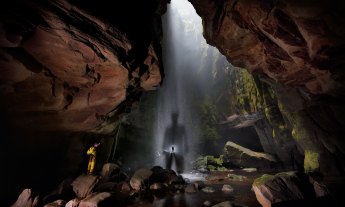Glacier caves are noteworthy for many reasons, not least the fact that they’re made from ice and snow instead of rock. Formed by glacier water that carves out caves in the ice, they’re also impermanent. As a glacier slowly shifts, so too do the caves and tunnels inside it. Explorer Brent McGregor, 62, has documented three glacier caves he and ranger Eddy Cartaya (TED Talk: My glacier cave discoveries) discovered within the Sandy Glacier on Oregon’s Mount Hood in 2011. Take a look at some of the beautiful photographs he took to keep a record of caves that won’t be there much longer.
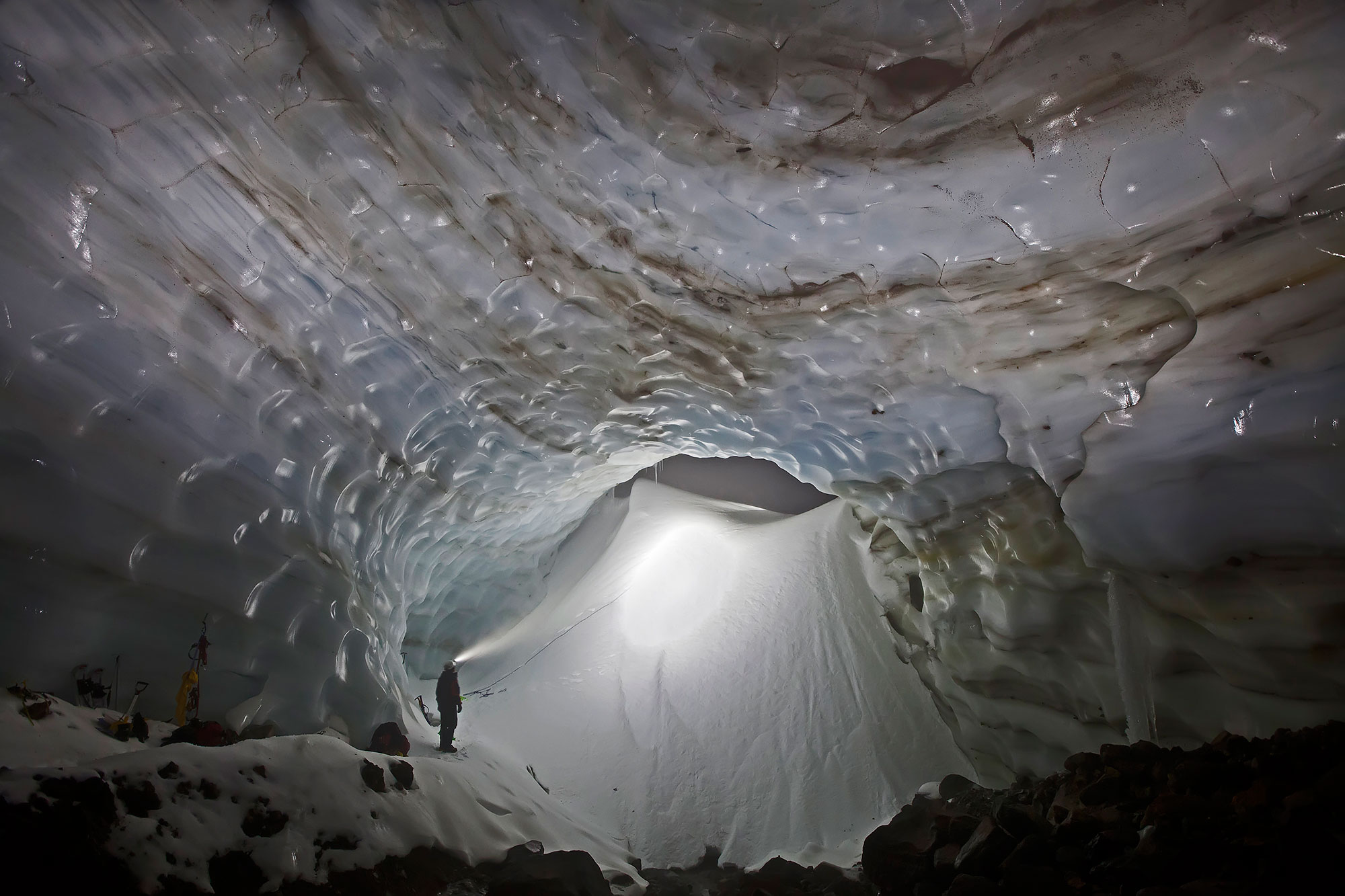
Behold the majesty of the Snow Dragon Cave
This January 2012 photo inside the Snow Dragon cave is from Cartaya and McGregor’s first extensive exploration of the caves. The entrance, about 2,000 feet wide, is being sealed up by winter snow, creating a wall about thirty feet high. Says McGregor, it’s likely that a week later the entrance was completely shut. The dark bands in the ice are a bit like tree rings, layers of trapped rock, gravel and dirt that preserve the history of the glacier. Now that the ice is melting, McGregor has seen tree seedlings that have sprouted, despite being frozen in ice for hundreds of years.
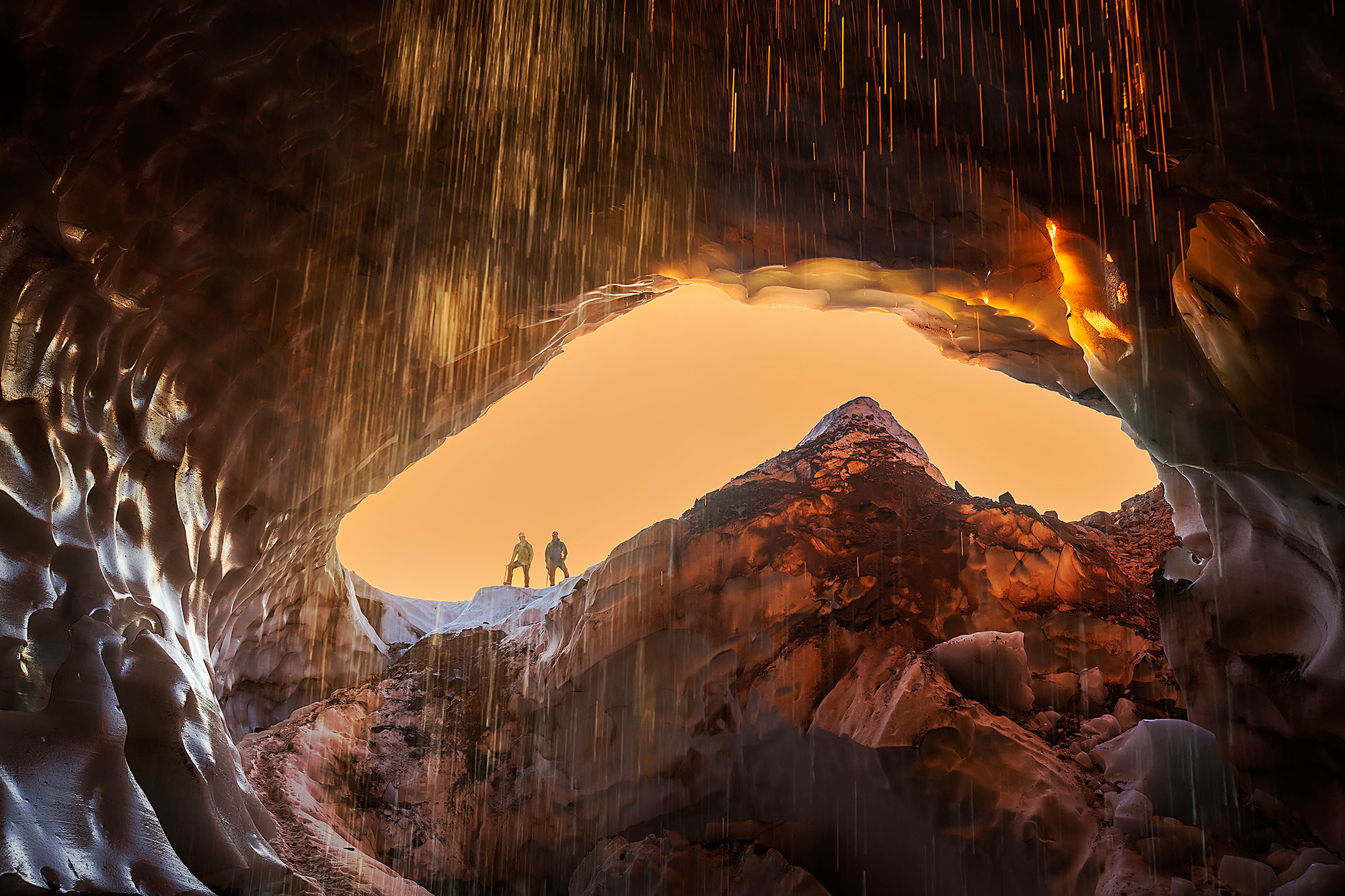
The sun sets, the ice melts …
Cascadia Expeditions’ Brett Gallagher and civil engineer Tyler Deboodt photographed in the entrance to Snow Dragon minutes before sunset in July 2013. Says McGregor, he wouldn’t be surprised if the cave was destroyed by 2016. Once skylights form, air flows through the cave at an accelerated rate, which weakens the caves’ structure and causes them to collapse.
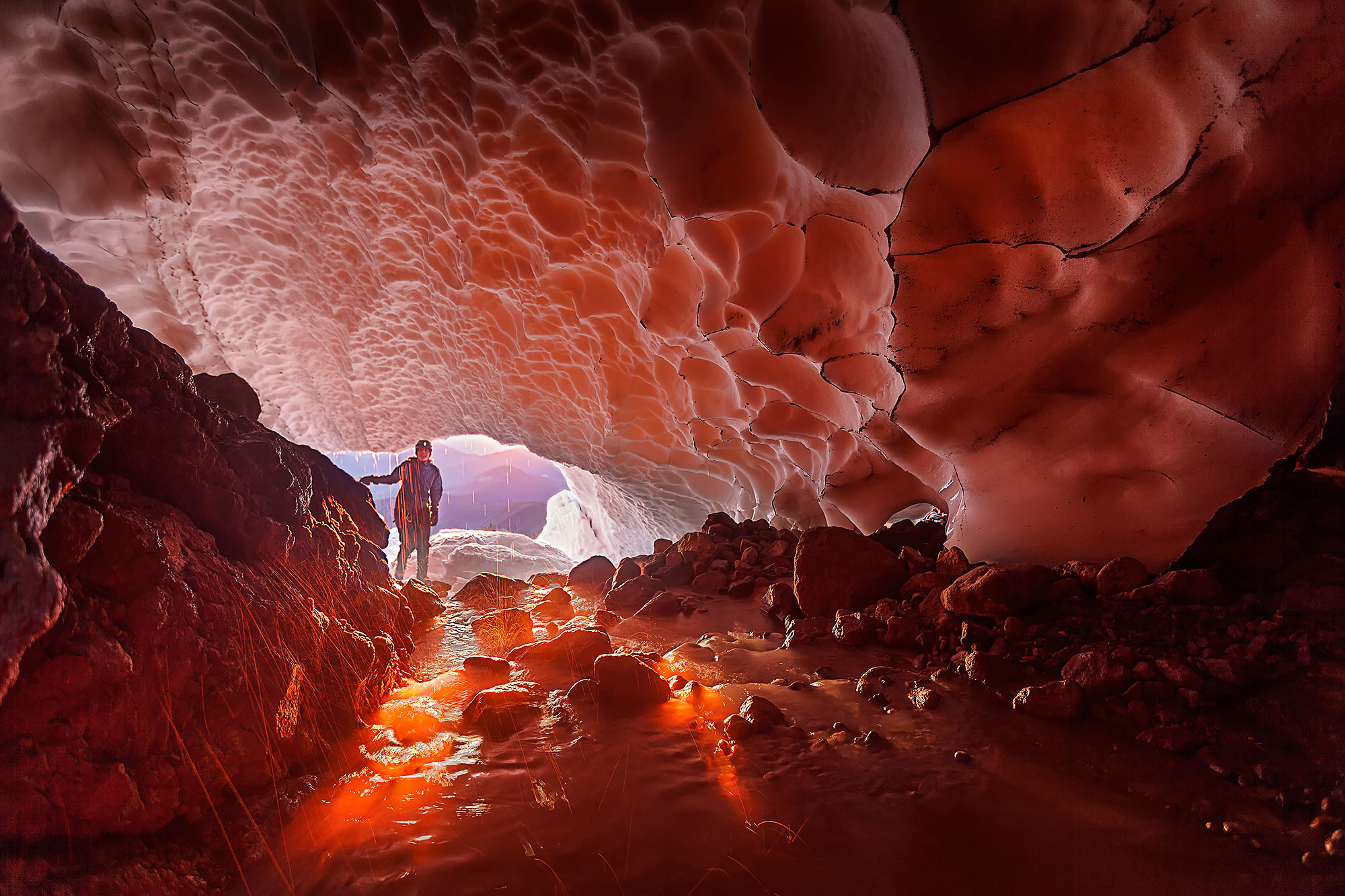
How to watch a sunset from inside a glacier
Photographed in 2013, Oregon Public Broadcasting’s Amelia Templeton stands in the fiery red of a July sunset. The long exposure shot makes water drips from the ceiling look like a sea of lasers. On the ceiling is what’s known as firn snow, somewhere between snow and glacier ice.
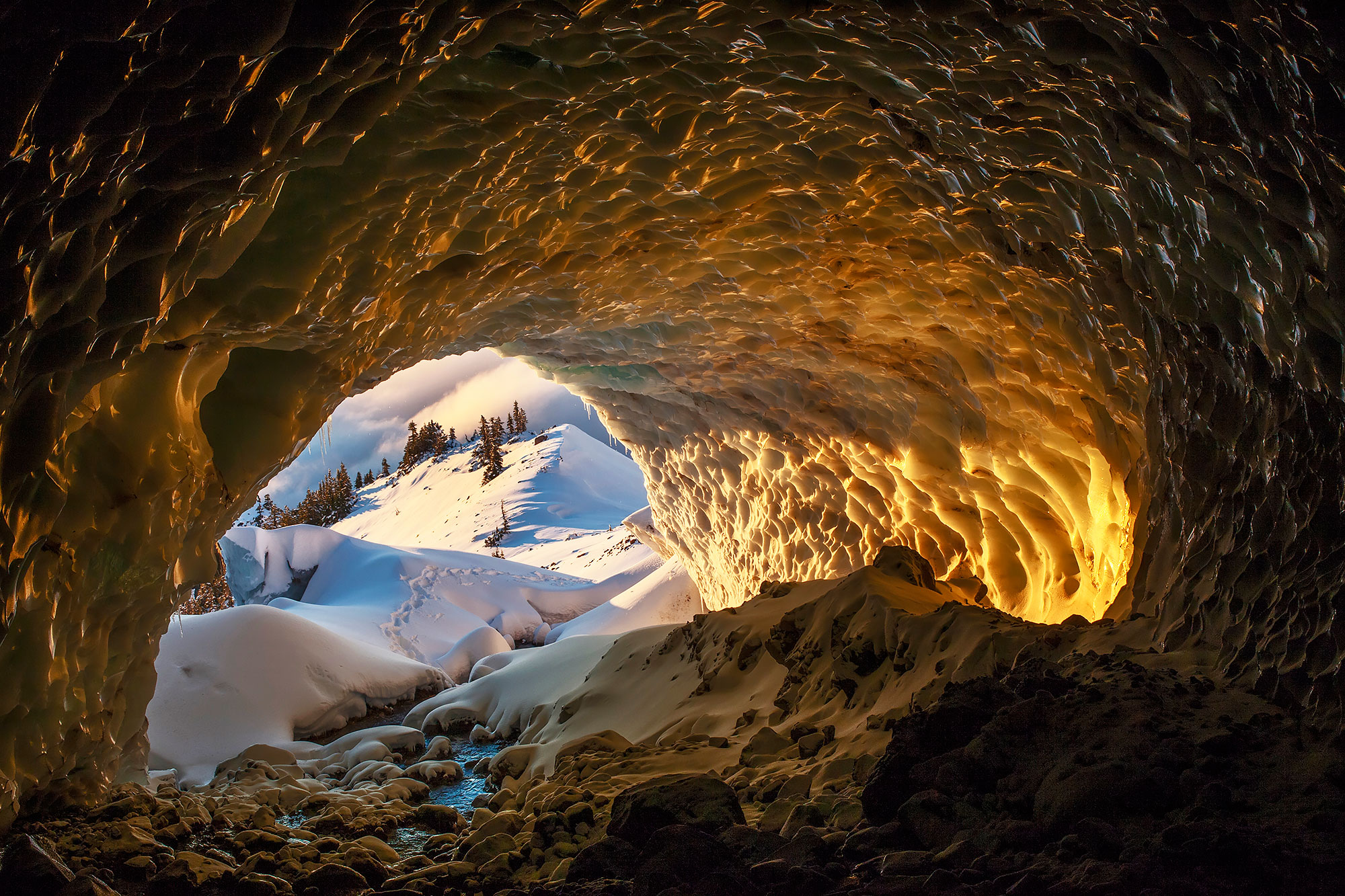
The view from the cave Pure Imagination
Photographed in October 2013, his shows the view from Pure Imagination, another of the three glacier caves that McGregor has been documenting since 2011. Climate change is causing glaciers to thin, which means more access for explorers, who nonetheless have to be wary of the ever-shifting space.
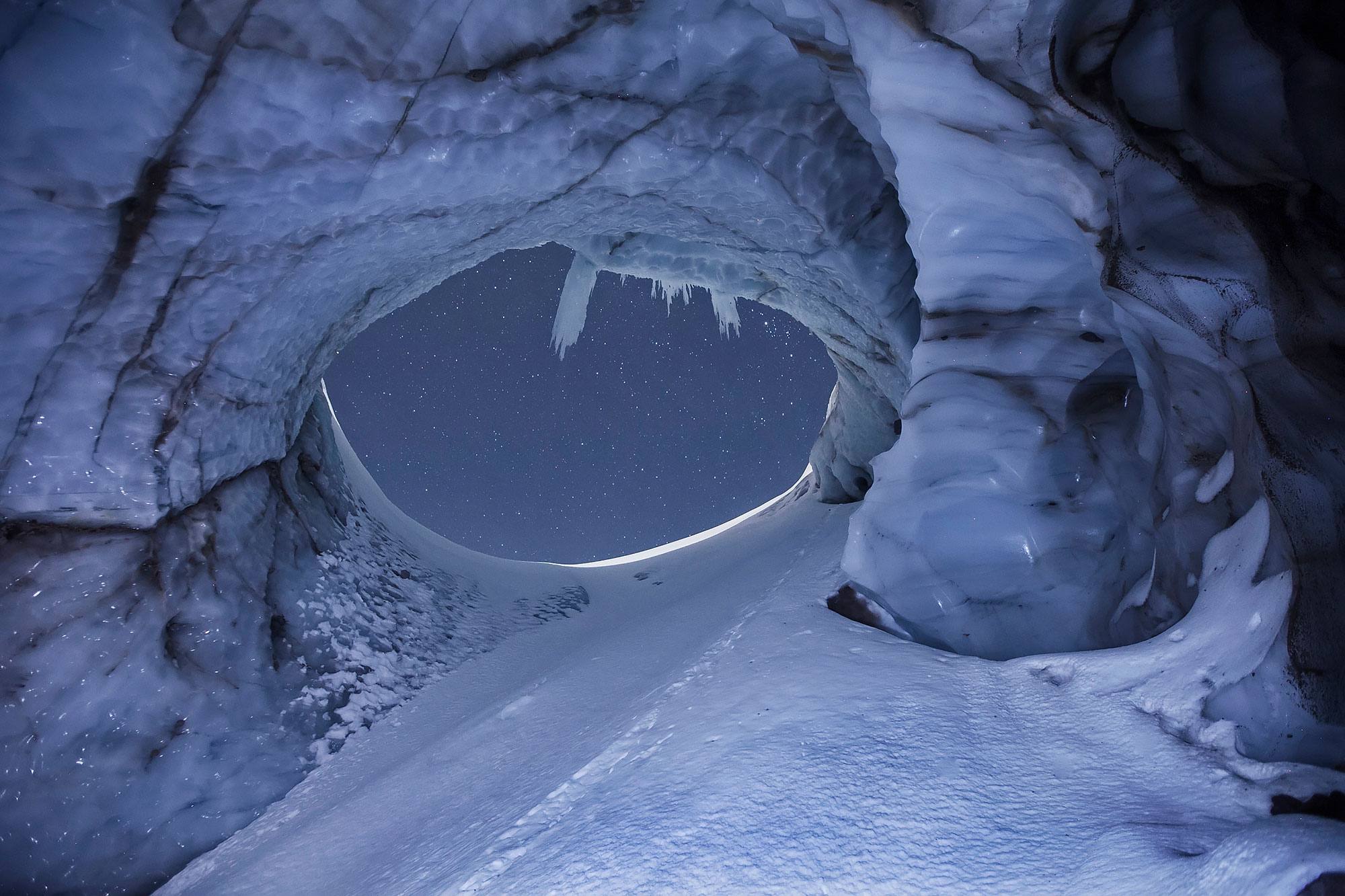
Enter through the jaws of Cerberus
The upper entrance to Pure Imagination is a moulin, or a vertical shaft that forms in a glacier, named “Cerberus” by McGregor and Cartaya. That icicle doesn’t look like much, but was around fifteen feet long when this photo was taken in November 2013; the entrance itself is about eighty feet wide. The scene might look serene, but inside the cave it’s actually very loud, due to the sound of water rushing through. Says McGregor, one has to yell to be heard.
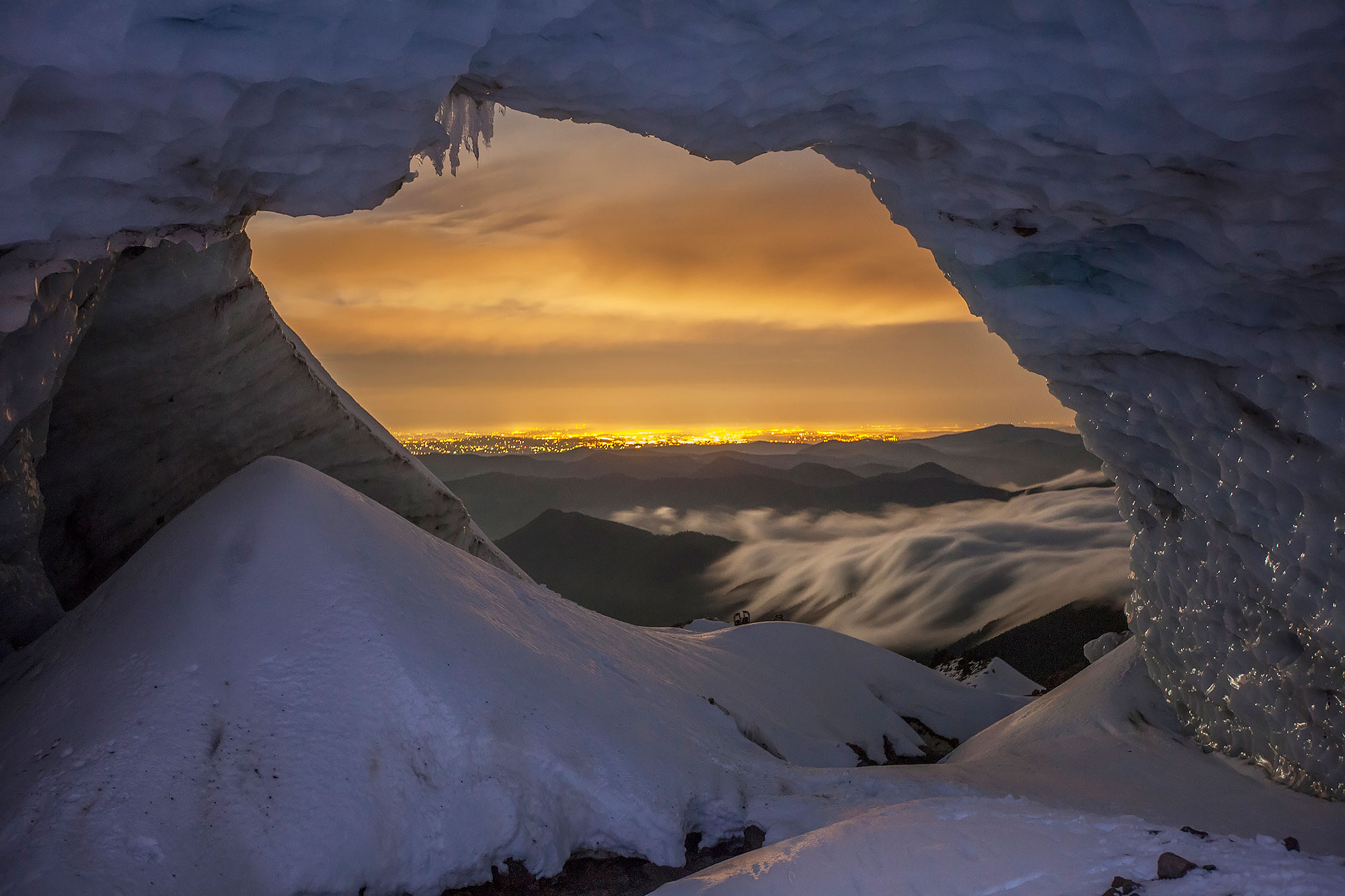
Gaze upon … light pollution
At 1am in November 2013, the nearby city of Portland is illuminated by light pollution. The dome on the left, around eight feet high, was created from snow that had fallen in through a hole above. To the right, moonlight reflects off the ice. In the center, McGregor’s snow shoes.
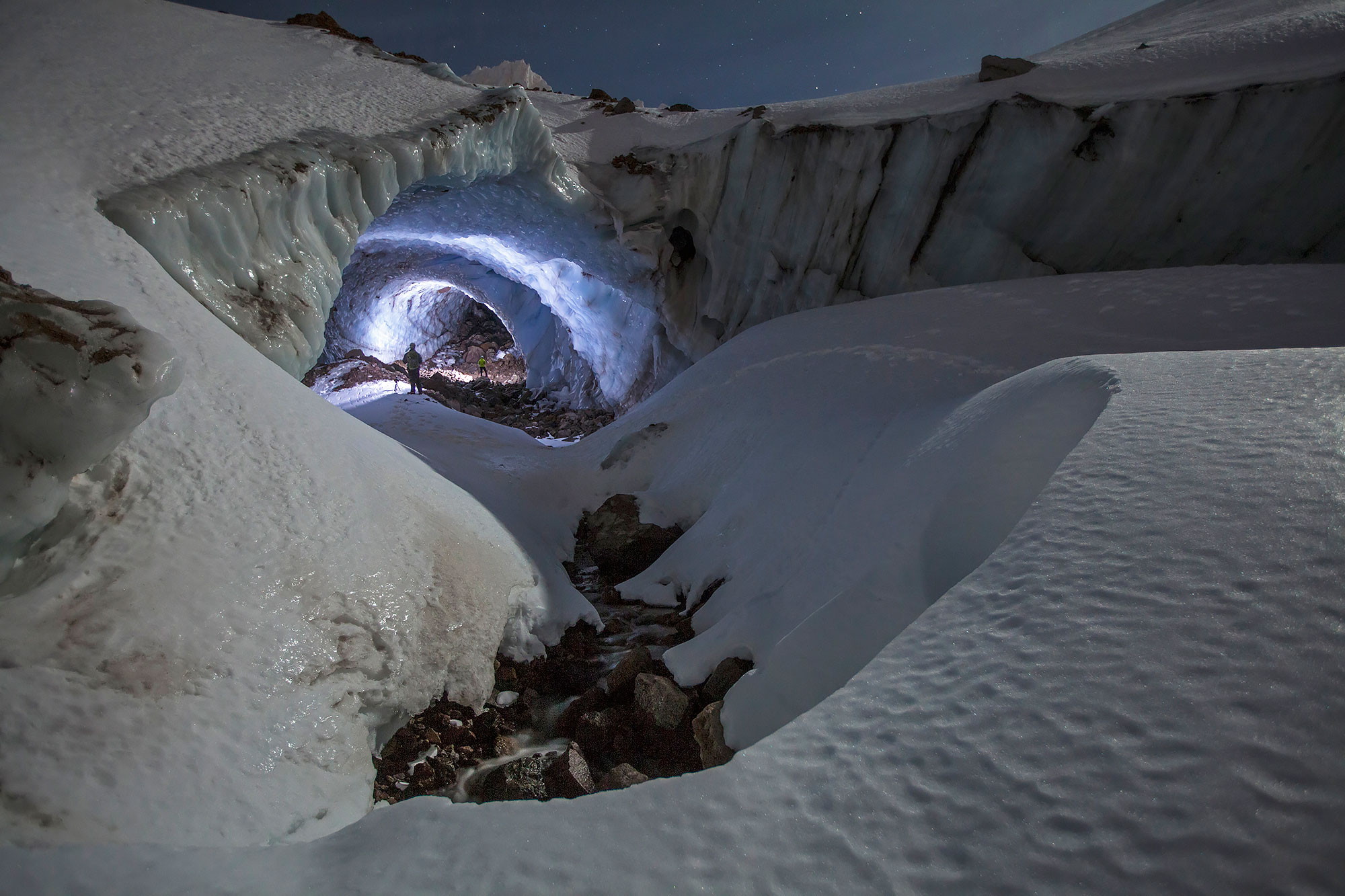
Knock knock: Outside the door to a glacier cave
The lower entrance to Pure Imagination, shot from outside the cave in November 2013. This photo shows where the cave starts: On the upper left is the hard shiny ice of the glacier.
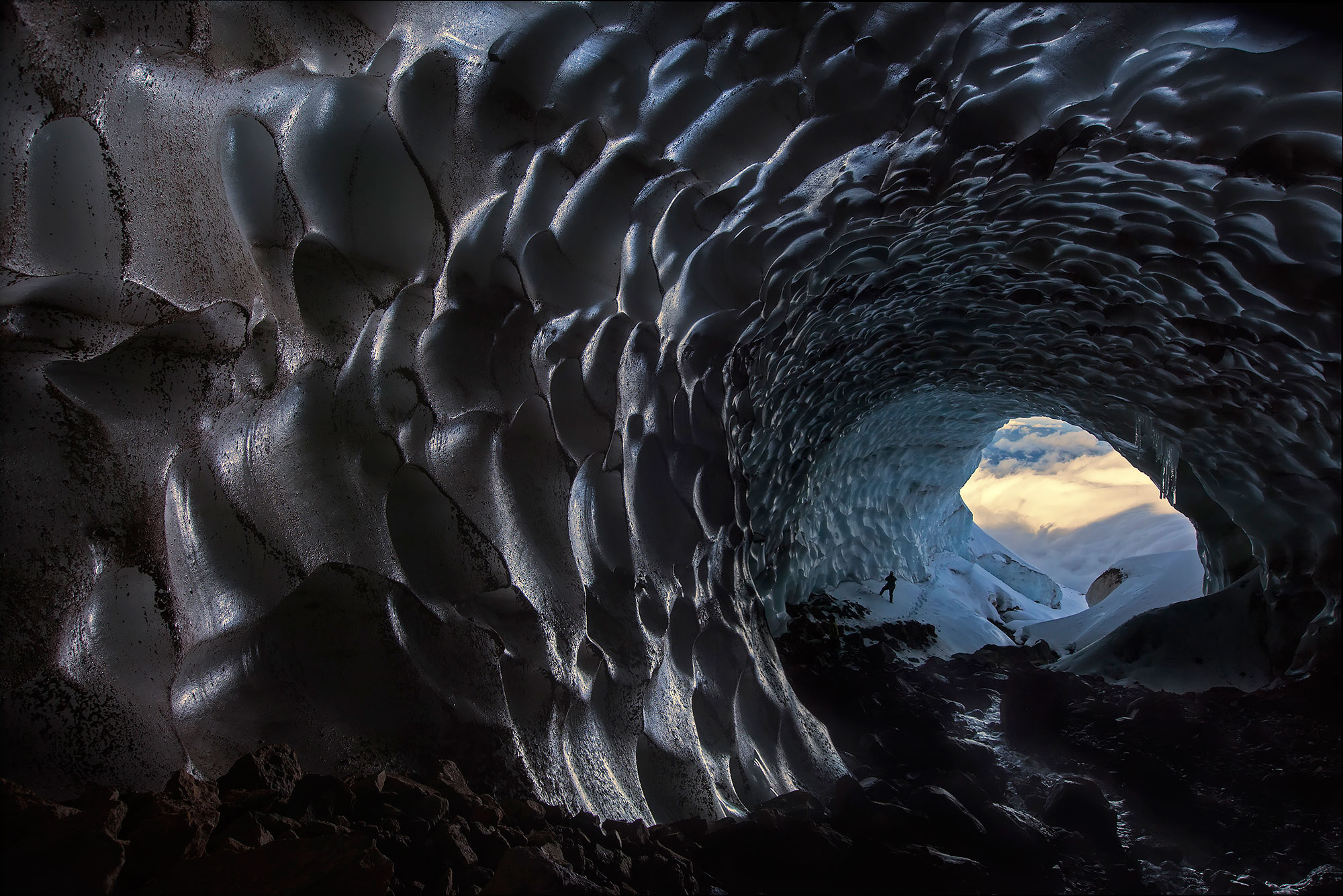
What a glacier cave looks like right before it collapses
Explorer John Waller at the entrance to Snow Dragon in November 2013. The ice’s scalloped pattern is created by the way warm air moves through the cave. Says McGregor, 2014 was the year he saw the most rapid change in the glacier. Snow Dragon is “completely gutted” now. This is one of the last pictures showing the cave in a healthy state.
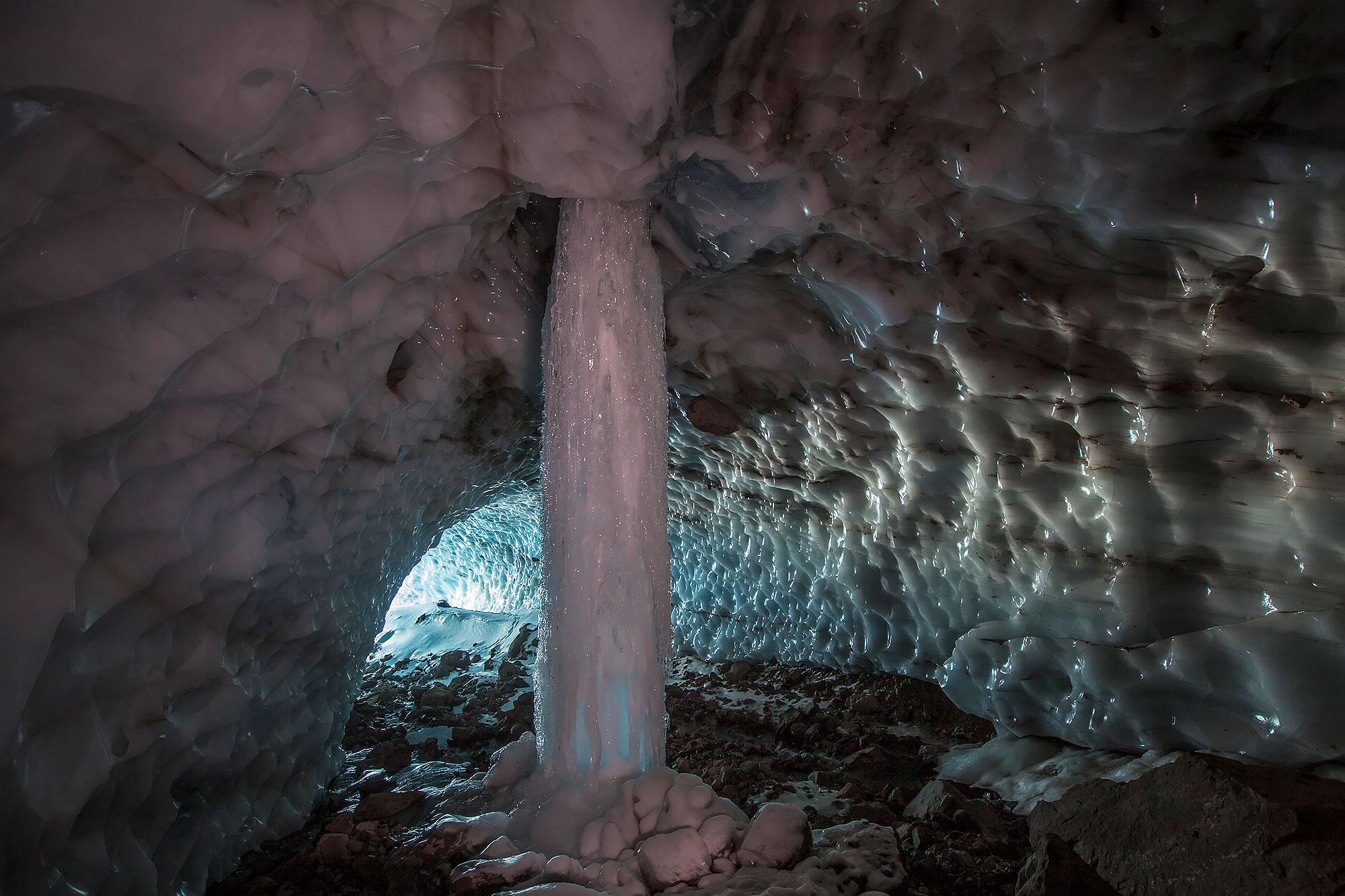
How a frozen waterfall signals the beginning of the end
A frozen waterfall, about 100 feet inside Pure Imagination and photographed in December 2013. Water had seeped through a hairline crack in the ice until it created a twenty-foot hole. McGregor photographed the same spot the previous year, when it was still a running waterfall. “You could stand under it and take a shower,” he says. He thinks the hole will grow to 100 feet by summer 2015, so the entrance will fall in and collapse, shortening the cave. “It’s sad to see it happen,” he says, “but it’s just part of the process of a dying glacier.”
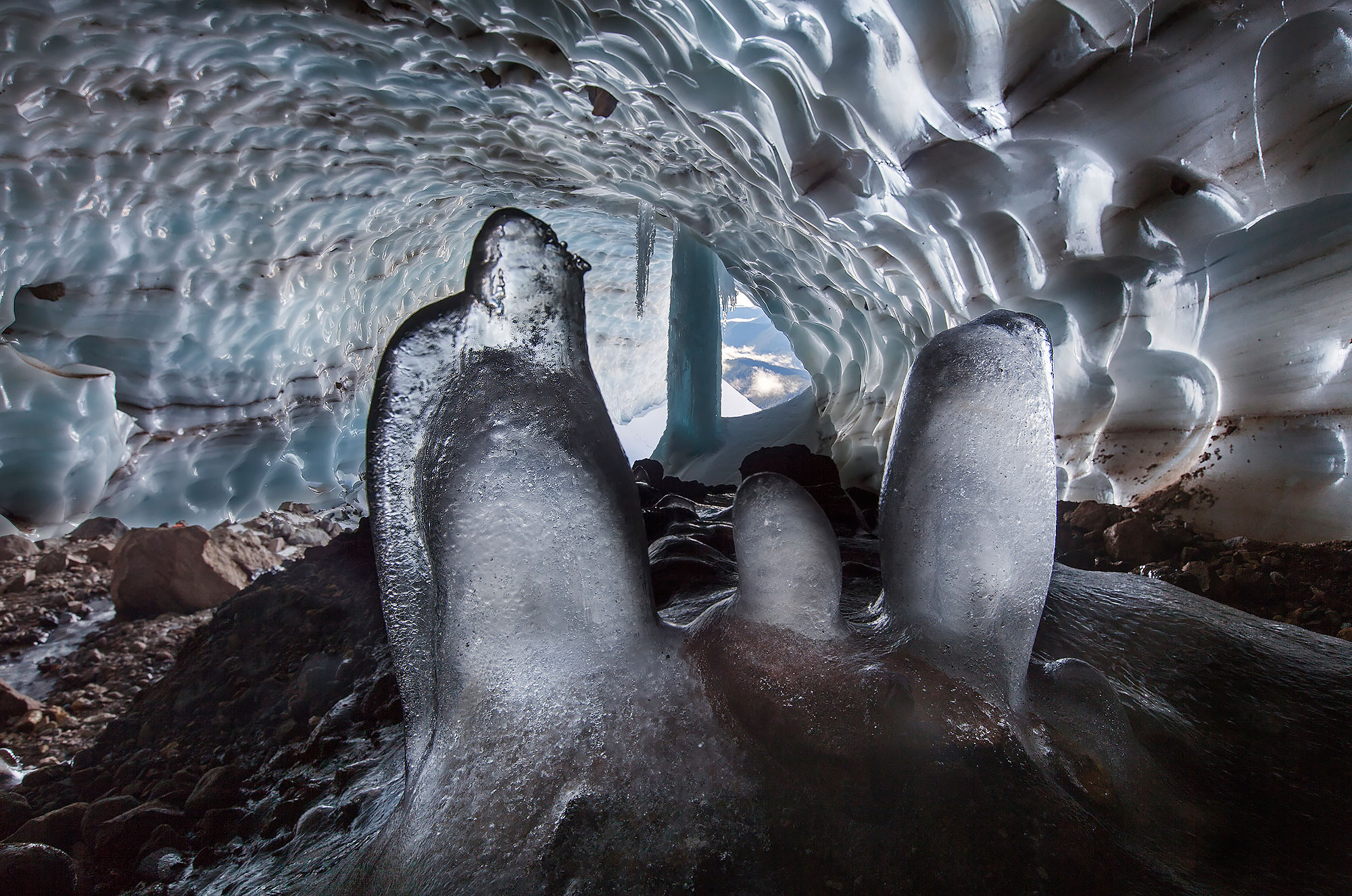
The joy of documenting the temporary
The tallest of these stalagmites is about fourteen inches high. Peeking out of a rock in the background to the left is some orange flagging, used to make survey maps of the cave. Cartaya and McGregor were the first to map the cave system, which measured more than 7000 feet in 2011 and 2012 but has lost as many as 100 feet every year since then. The idea of documenting something that won’t be around for long doesn’t phase McGregor. “It’s satisfying that we’re putting up an extensive data history of what was there,” he says.
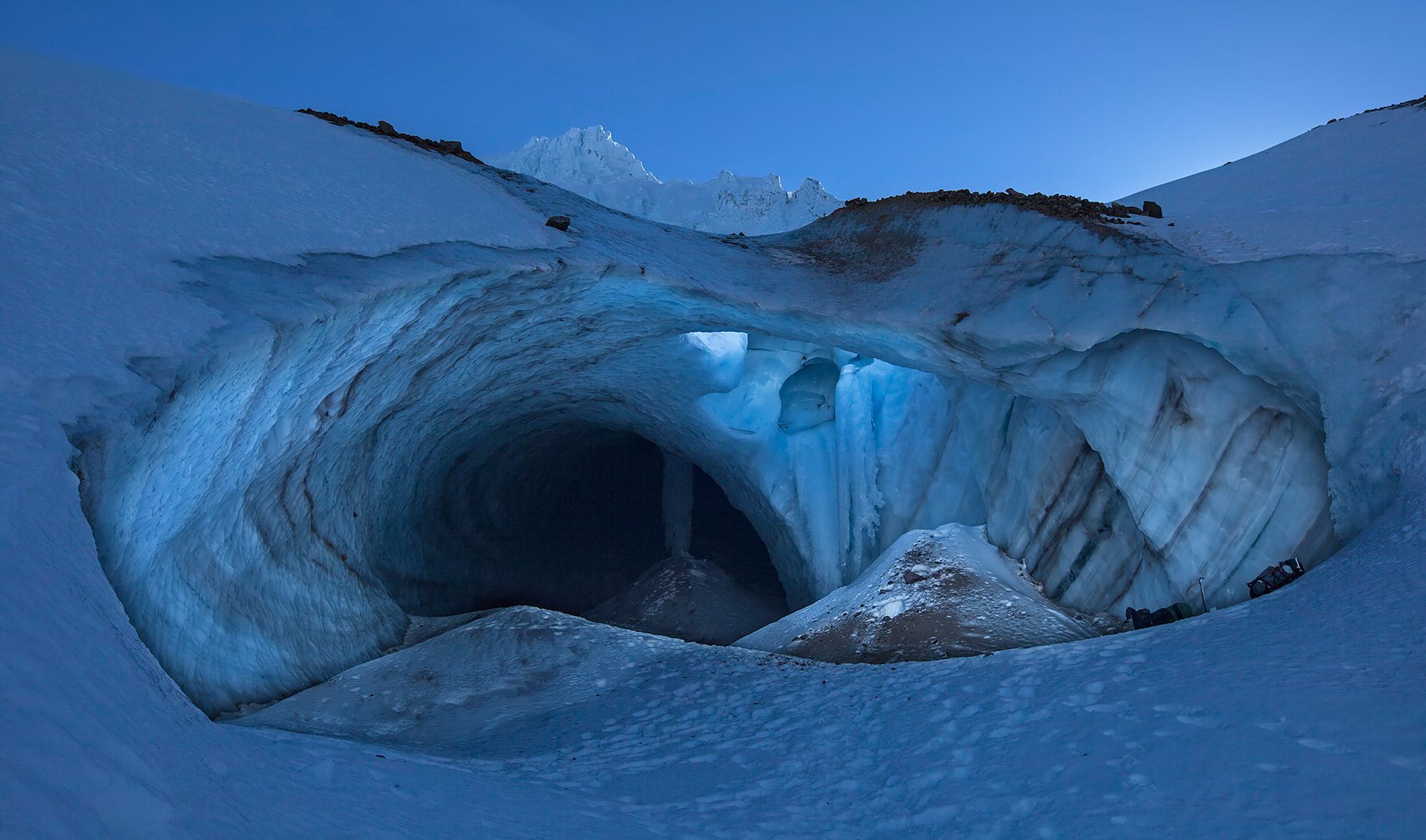
Glacial speed? Not so glacial any more
Taken in January 2015, this shows the latest view of the entrance to Pure Imagination. Notice that the entrance has widened significantly. “Whoever coined the phrase ‘moving at glacial speed’ must not have visited the Sandy Glacier!” jokes McGregor.
All photos courtesy of Brent McGregor. See more photos from his and Cartaya’s explorations on Instagram.

















